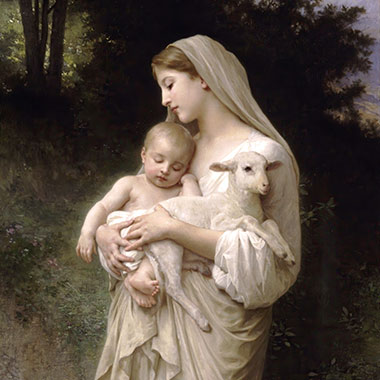-
-full.webp)
Study Of A Woman’s Head (Philomèle Et Progné)
A hauntingly intimate portrait, where sorrow and myth converge in the delicate features of a woman’s face.
-
-full.webp)
Le Sommeil (1864)
A tender depiction of two sleeping children, radiating innocence and quiet intimacy through masterful light and texture.
-
 (1880)-full.webp)
l’été (Summer ) (1880)
A young woman basks in the golden light of summer, her serene presence blending with the lush meadow around her.
-
-full.webp)
The song of the angels (1881)
Cherubic angels play a lullaby for the infant Christ in this luminous vision of divine harmony and maternal serenity.
-
 (1873)-full.webp)
L’agneau Nouveau-Né (The Newborn Lamb) (1873)
A tender moment between a child and a newborn lamb, rendered with exquisite realism and emotional depth.
-

L’Innocence (1893)
Bouguereau’s delicate brushwork captures motherhood and purity in a serene setting
